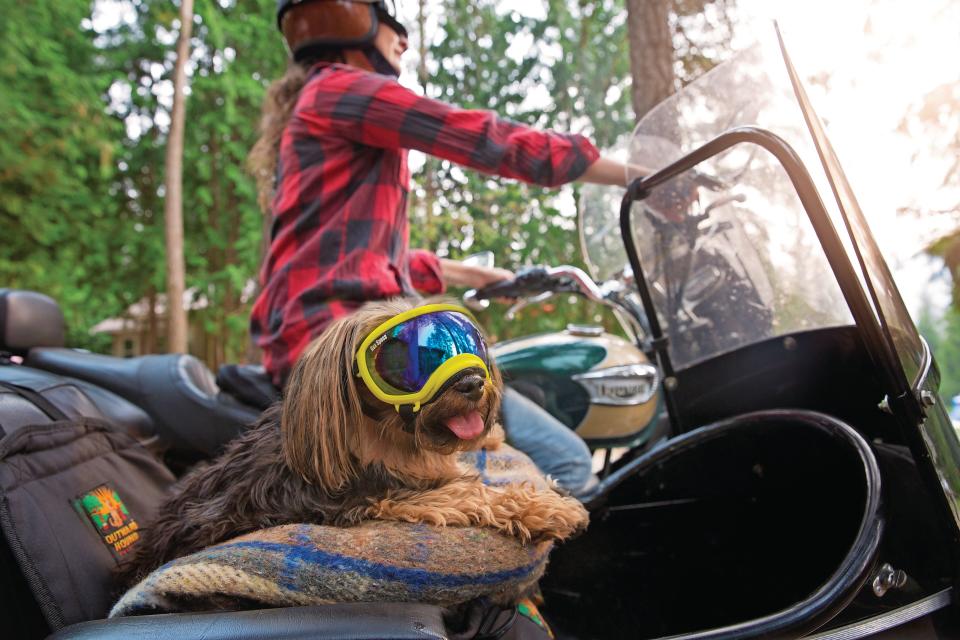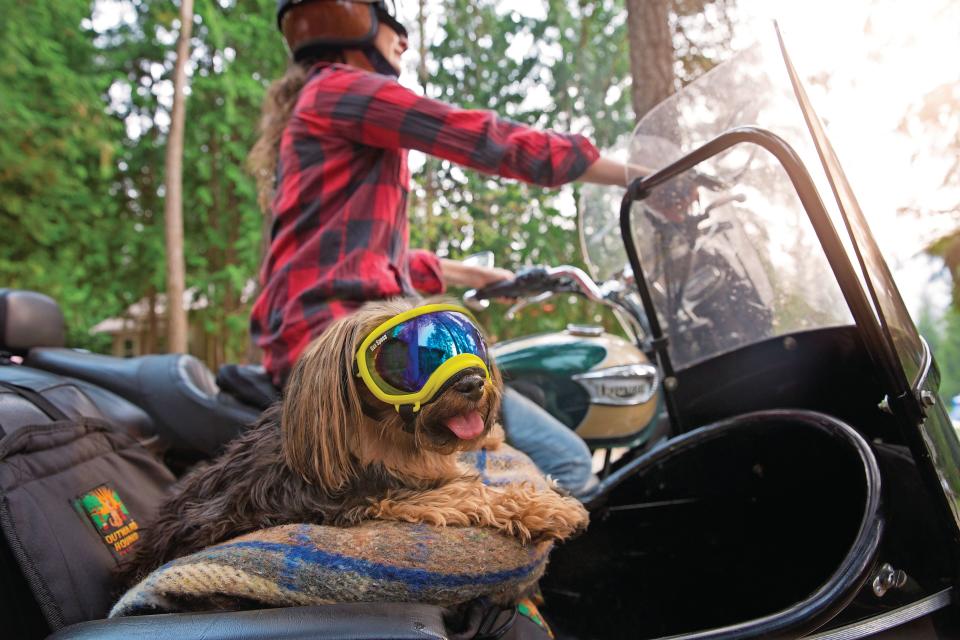Canine eyewear may help your dog's sight

Zero was a highly trained, driven agility dog. So, at competitions, when he started running into obstacles and falling off the ends of teeter-totters, his owner, San Francisco-area dog trainer Dianne Morey, was concerned.
As time passed, she noticed a pattern. The problems only occurred at competitions held in horse arenas, where yellow obstacles blended into the color of the sand covering the floor.
Concerned about his eyesight, Morey took Zero to a veterinary ophthalmologist, who diagnosed him with progressive retinal atrophy, an irreversible genetic condition. Morey found the diagnosis “heartbreaking.”
After one last agility competition — which he won — Zero retired. In the time since, he’s led a life full of activities like dock diving and hiking, where poor vision is less dangerous. While there’s no cure for his disease, protective eyewear has helped keep him safe while being active.
Signs of failing vision
On average, dogs develop nearsightedness or farsightedness less often than humans, says Alexandra van der Woerdt, head of the ophthalmology service at Animal Medical Center in New York City. However, their eyesight also declines with age. Injuries and ailments such as glaucoma, cataracts and corneal ulcerations can cloud their vision.
Thinking back, Morey realizes some behaviors — for instance, the way Zero poked his nose through chain-link fences before entering a gate — were signs his vision was impaired.
Identifying vision issues in dogs isn't as easy as with humans. Dogs don’t squint at menus or bark wrong letters on the eye chart, and they’re very good at adapting, says veterinary ophthalmologist Jeffrey Bowersox, medical director at the BluePearl Veterinary Specialty Center in New Castle, Del.
Besides collisions, he says, warning signs of eye problems include:
Redness or debris in the eye
Unusual discharge
Excessive squinting
Keeping one or both eyes closed
Avoiding pats near the eye
When glasses help
Treatments for eye problems may include eyedrops, medications or surgery. Eyewear can also play a role in treating or preventing many issues.
Owners of certain breeds — pugs, Boston terriers and shih tzus, for instance — often find dirt or debris lodged in their dogs’ exposed eyes, Bowersox says. Eyewear worn outdoors, especially in open-air vehicles, shield them.
Products like the Rex Specs that Zero wears protect blind or visually impaired dogs from eye injuries due to branches or other objects. Colored lenses boost contrast, making the most of limited vision.
Pannus, which causes a grayish-pink film to form on the cornea, worsens at high altitudes and in direct sunlight. UV-protective specs can slow down progression, van der Woerdt says.
Prescription eyewear for dogs isn’t common. However, pooches who have the light-focusing lenses removed from their eyes during surgery for cataracts or other conditions can benefit
from vision correction via contacts or prescription goggles, Bowersox says.
Wearing Them Well
Many dogs don’t like eyewear at first. Zero was an exception, thanks to his training in agility and tricks, Morey says.
Make sure your dog’s glasses fit well — they should be spaced properly between his eyes, and the lenses shouldn’t bump the eye globes — and start slowly, gradually increasing the amount of time your dog wears them.
Eventually, some dogs may even look forward to putting them on. That’s the case for Smoky and Bandit, terrier mixes that ride in the back of San Antonio resident Richard Valdez’s truck in their bright-red Doggles. Often, passersby will snap photos, he notes: “They actually serve two purposes — protecting their eyes, and it also makes them rock stars.”

This article originally appeared on USA TODAY: Canine eyewear may help your dog's sight
